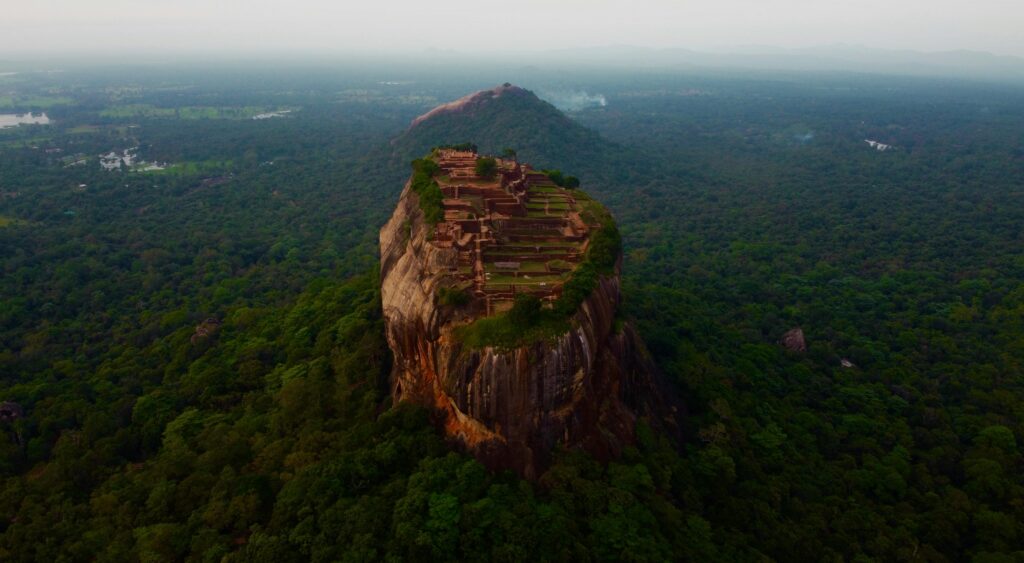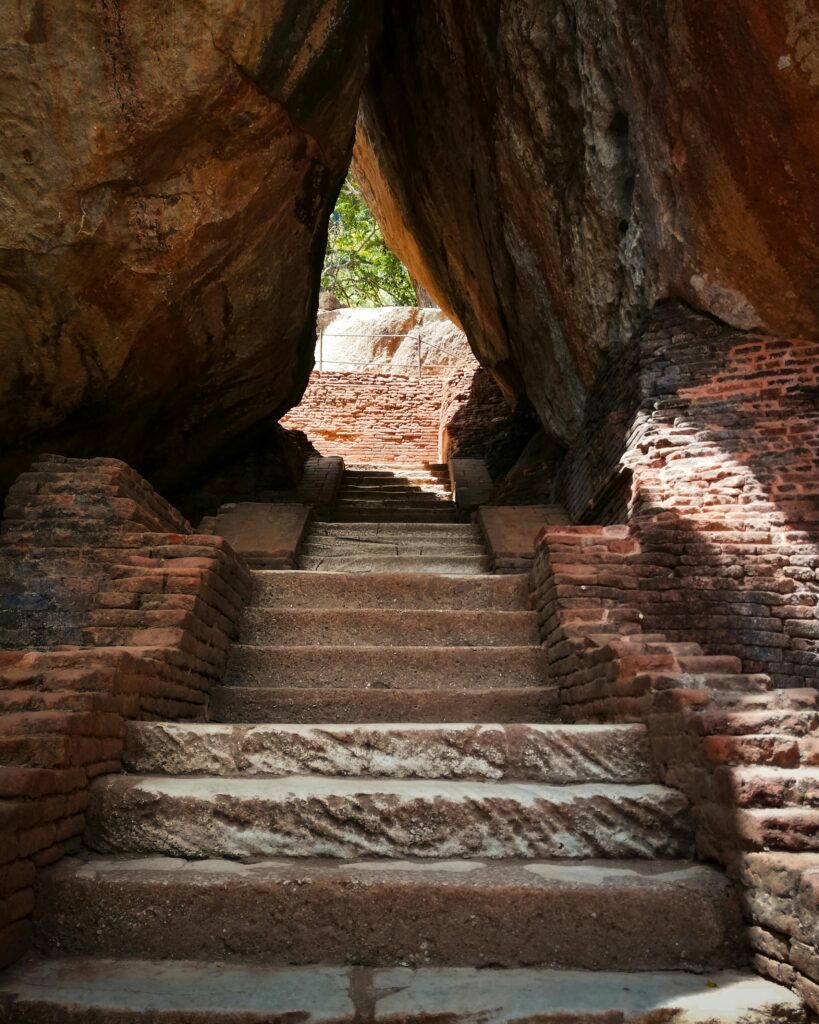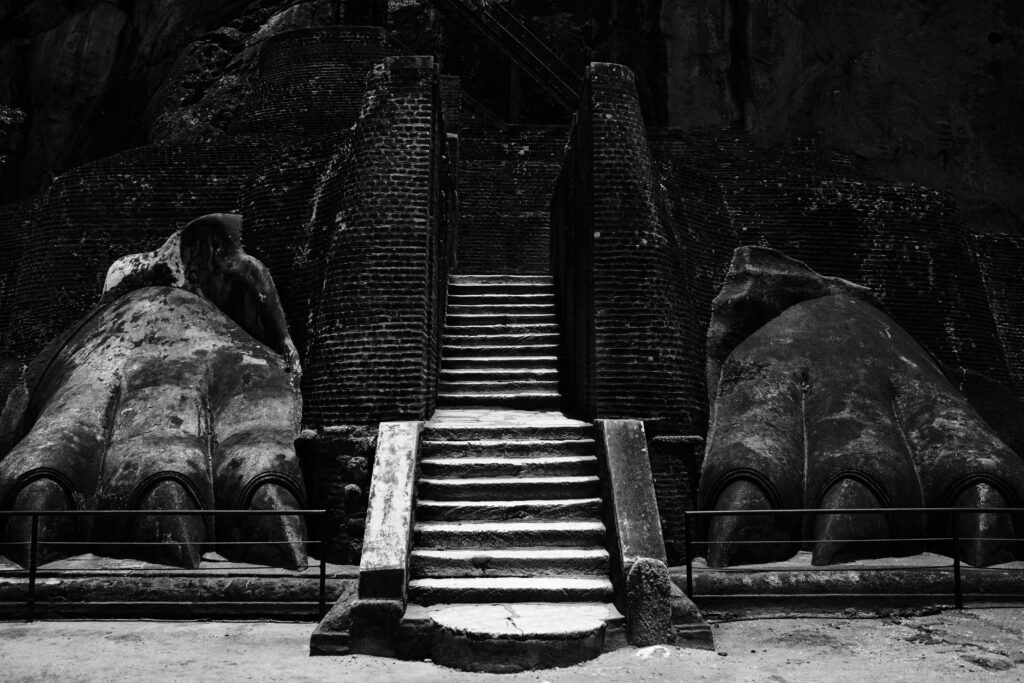Sigiriya
Detailed description about World Heritage “Sigiriya.”
Sigiriya, also known as the Lion Rock, is one of Sri Lanka’s most iconic landmarks and an awe-inspiring example of ancient engineering and artistry. Situated in the Matale District of central Sri Lanka, this rock fortress has a profound historical, cultural, and architectural significance, earning it a place on the UNESCO World Heritage list.
Prehistoric and Early Settlements
The area surrounding Sigiriya has been inhabited for thousands of years. Archaeological evidence indicates that the rock and its surrounding caves were used as Mesolithic shelters long before its later prominence as a royal fortress. Brahmi inscriptions discovered on the site suggest that Buddhist monks and ascetics were among the early inhabitants, as far back as the 3rd century BCE.
The Reign of King Kashyapa (477-495 CE)
The most defining chapter in Sigiriya’s history is associated with King Kashyapa I, who reigned in the 5th century CE. Kashyapa’s rise to power was marked by a violent struggle, including the overthrow and murder of his father, King Dhatusena, to claim the throne. Fearing retaliation from his legitimate heir—his brother, Moggallana, who fled to India—Kashyapa chose to build a secure capital at Sigiriya, a natural fortress with sheer cliffs and an excellent vantage point.
The fortress complex he constructed at Sigiriya became both a palace and a stronghold, designed for defense, but also as a symbol of royal power. His decision to transform Sigiriya into a fortified city was an innovative feat that combined both the natural advantages of the rock with advanced engineering techniques.
Construction and Design
Kashyapa’s ambitious construction projects at Sigiriya included:
- Palaces and buildings on the summit: The rock’s summit was transformed into a luxurious royal palace, complete with gardens, pools, and courtyards.
- Water and terrace gardens: The base of Sigiriya boasts meticulously designed gardens, including boulder gardens, terrace gardens, and an advanced hydraulic system that included reservoirs and fountains. These gardens demonstrate the advanced knowledge of water management in ancient Sri Lanka.
- Frescoes: On the rock’s western face, a series of vivid frescoes depicting beautiful women, often referred to as the Sigiriya Damsels, have been preserved. These frescoes offer a glimpse into the artistic achievements of ancient Sri Lanka and are celebrated for their delicate beauty and intricate detail.
- The Lion’s Gate: The most iconic feature of Sigiriya is the Lion’s Gate, a monumental entrance to the palace. The entrance is shaped like a lion, with large paws leading to the summit, giving the fortress its name. Only the lion’s paws remain today, but the gate remains one of the most recognizable features of the site.
Decline and Transformation into a Monastic Complex
After Kashyapa’s death in 495 CE, Sigiriya was abandoned as a royal capital. His brother, Moggallana, returned from exile and defeated Kashyapa’s forces. The fortress was subsequently converted into a Buddhist monastery and continued to serve this purpose for several centuries. It remained a monastic site until the 13th or 14th century, after which it was abandoned and slowly reclaimed by the jungle.
Modern Discovery and Excavation
Sigiriya lay forgotten for centuries, hidden beneath dense jungle. It wasn’t until the 19th century that British explorers rediscovered the site. Excavations and restorations began in earnest during the colonial period and continue to this day, revealing Sigiriya’s full grandeur. Today, Sigiriya is a major archaeological site, and much of its original architecture and artwork has been preserved or carefully restored.
Significance of Sigiriya
Art and Frescoes
The Sigiriya frescoes are among the most remarkable examples of ancient Sri Lankan art. The frescoes, believed to represent either celestial maidens or women from King Kashyapa’s court, are painted on the rock’s western face. Despite the passage of time, their vibrant colors and intricate details remain stunning. These frescoes are a testament to the sophistication of the island’s ancient artists and their mastery of form, color, and texture.
Hydraulic Systems and Engineering
The hydraulic engineering used in Sigiriya’s gardens is another remarkable aspect of the site. The rock’s summit features a complex system of reservoirs and water channels designed to create cascading waterfalls, fountains, and lush gardens. This system not only demonstrates the engineering genius of the time but also reflects the ancient Sri Lankan expertise in managing water, which was crucial for sustaining life and agriculture.
Cultural Legacy
Sigiriya is more than just an architectural marvel; it holds deep cultural significance for Sri Lanka. It is the subject of local legends, myths, and folklore, and has been an enduring symbol of the country’s historical and spiritual heritage. The fortress’s transformation from a royal palace to a Buddhist monastery adds to its mystical aura.
In modern Sri Lanka, Sigiriya is regarded as a symbol of the island’s rich past and has become a source of pride and inspiration for the Sri Lankan people.
Tourism and Preservation
Today, Sigiriya is one of Sri Lanka’s most visited tourist destinations, attracting visitors from around the world. It offers not only a glimpse into the grandeur of ancient Sri Lankan civilization but also a stunning panoramic view of the surrounding cultural landscape. Efforts to preserve the site continue, as it remains a vital part of Sri Lanka’s national identity.
Conclusion
Sigiriya is a remarkable fusion of natural beauty, advanced engineering, and artistic expression. From its roots in prehistoric times to its role as a royal citadel and later a Buddhist monastery, Sigiriya stands as a testament to the ingenuity and vision of the civilizations that built and maintained it. As a UNESCO World Heritage Site, it remains an enduring symbol of Sri Lanka’s rich cultural and historical legacy.



